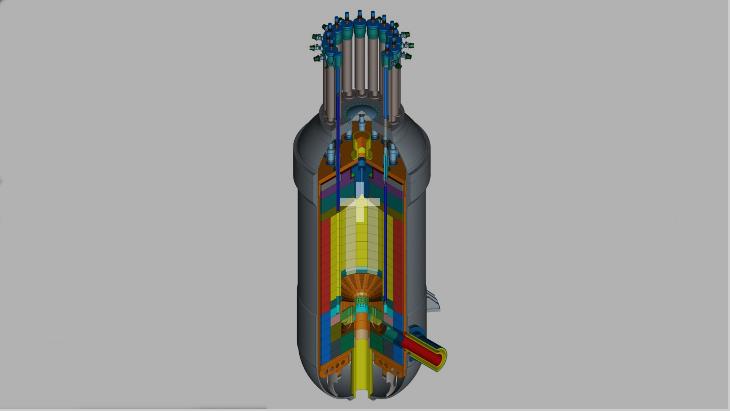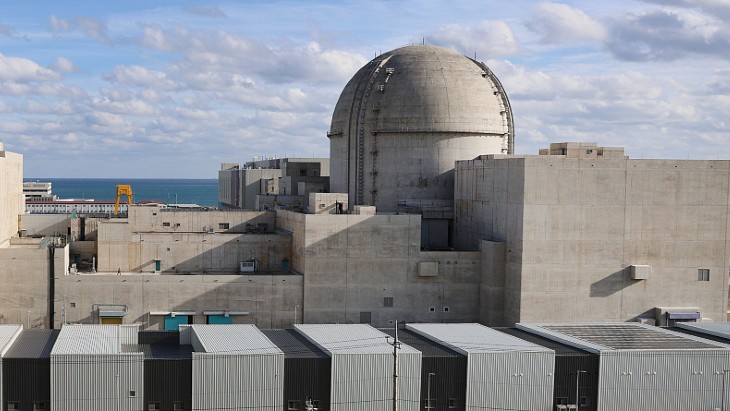South Africa's PBMR was to have been a small-scale high-temperature reactor using graphite-coated spherical uranium oxycarbide tristructural isotropic (TRISO) fuel, with helium as the coolant, able to supply process heat as well as generating electricity. The nature of the fuel in particular gives the reactor a high degree of passive safety, exploiting inherent safety characteristics depending on the physical properties of the system without the need for intervention.
Based on well-proved German technology, South Africa had been working on the PBMR project since 1993, however, in 2010 the government formally announced its decision no longer to invest in the project, which was then placed under 'care and maintenance' to protect its intellectual property and assets.
Chairman and CEO of Stratek Global, Kelvin Kemm, a former chairman of the South African Nuclear Energy Corporation, said that with the experience and legacy of the PBMR programme - which was at the start of the pilot plant stage when it was paused, and employed 2000 people - the Pretoria-based firm hopes the advanced designs mean there could be a first-of-a-kind HTMR-100 plant built within five years, adding that the country had also produced the TRISO fuel which would be used.
He said the 35 MWe reactor's relatively small size - it takes up an area less than a football pitch - meant it could be used in a wide variety of locations, including for industrial and other applications such as process heat or desalination. The TRISO pebble fuel is also "very robust and can be thrown on a concrete floor with no effect. It can therefore be easily transported over long distances and over rough roads".
Speaking during a visit to London where he was meeting potential funders, Kemm said the design was particularly suited to Africa, with its low cooling water needs and its ability to power, for instance, a remote mine and community without the requirement of long-distance power distribution network lines. It had also attracted interest from countries elsewhere including those where it would be sited in snow or desert conditions.
He said that the initial target market is for the African continent, as well as further afield in the Pacific Rim and Asia. A current focus is South Africa's forthcoming programme to develop 2500 MW of new nuclear, including 100 MW from an SMR.
The company says there are two main differences between the PBMR and the HTMR-100: "The first is that gas outlet temperature was reduced from 940°C to 750°C. This was done to reduce some engineering design requirements to make the reactor more affordable and competitive to build. The second main difference is that the PBMR used a direct helium cycle through the reactor and into the turbines. The HTMR-100 instead takes the heat into a water heat exchanger or steam generator, which produces steam for conventional steam turbines or process heat. The important point of this decision is that all the equipment downstream of the heat exchanger can be purchased off-the-shelf. This considerably reduces the design development time, and cost for the secondary equipment."
Eskom's two-unit Koeberg plant is the only nuclear power plant in Africa, and according to World Nuclear Association, produces about 5% of South Africa's electricity. The plant's two 900 MWe pressurised water reactor units were connected to the grid in 1984 (unit 1) and 1985 (unit 2) and were originally licensed for 40 years of operation. Eskom has applied to the country's National Nuclear Regulator to extend the plant's operational life by 20 years, to 2045.
South Africa's Minister of Mineral Resources and Energy, Gwede Mantashe, told the National Council of Provinces - the upper house of the South African Parliament - last month that the government intends to issue a request for proposals for the procurement of 2500 MW of nuclear energy in the fourth quarter of this year as part of its electricity procurement plans.
There are more than 50 different small modular reactors in design or development across the world, encompassing a wide variety of concepts, including China's demonstration High Temperature Gas-Cooled Reactor-Pebble-bed Module (HTR-PM) at the Shidaowan site in Shandong province which reached its initial full power in December 2022.





_72306.jpg)


_49562.jpg)





